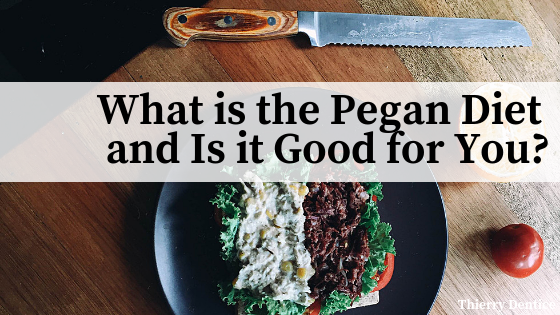The pegan diet is a combination of veganism and paleo. Paleo is a diet based on what type of foods would have been eaten during the Paleolithic era. Foods that are included include lean meats, fish, vegetables, fruit, seeds and nuts. Grains, dairy products and legumes are not included on this diet, as they only became available after farming emerged. Veganism is a diet where all animal products and byproducts are eliminated, meaning no meat, dairy or eggs.
The pegan diet takes strong suits from both diets and combines them to create a new diet altogether. The resulting diet is more moderate and healthier. On this diet, plant-based foods should make up around 75 percent of your daily food intake. To achieve this, you should eat two to three servings of produce with each meal. All fresh produce is on the menu; start with non-starchy vegetables and then add in starchier fruits. The remaining 25 percent of your food intake should be made up of protein. While you can eat animal-based protein on this diet, start with plant sources first. Nuts, seeds and legumes are a great source of non-animal protein. When buying animal-protein, look for grass-fed and sustainably raised meat and poultry. All dairy products should be avoided.
Twenty-five to 35 percent of calories can come from fat, as long as they’re healthy sources of fat. Look for omega-3-rich sources of fat, like fatty fish, flaxseed, avocados and nuts. Try to avoid vegetables high in omega-6, such as soybeans and canola.
The paleo diet has been linked to more even blood sugar levels and helping to manage type 2 diabetes. A vegan diet has been linked to a number of health benefits as well. Here are a few tips to help you make the most of this diet.
Avoid falling into a routine
When you find recipes you like that fit into your diet, it’s easy to rely on those and eat them often. However, you should incorporate a variety of different recipes into your diet. When you only eat the same foods, you may not be meeting your nutritional requirements. Having a varied diet helps to ensure you’re getting a wide range of vitamin and minerals.
Don’t rush the transition
If you’re brand new to this diet, don’t go from eating meat with every meal to only eating a small amount once a day. Transition gradually into the diet will give your body time to adjust and help you to get used to not being able to eat certain foods. Start adding more and more plant-based foods into your diet and slowly reduce how much meat you’re eating.
